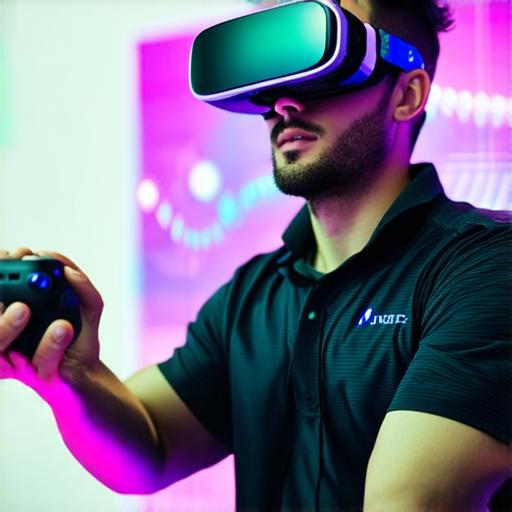
How do you make use of virtual reality?
To unlock the full potential of virtual reality (VR), businesses must understand how to make use of it in their industry. This article will explore various ways VR technology can be used across different sectors and provide tips on optimizing your experience for maximum impact.
One of the first things to consider when using VR is the type of device you’ll be using. There are a variety of devices available, from smartphone-powered VR headsets to high-end PC and console systems. The choice of device will depend on your specific needs and budget.
Once you have your device, it’s time to start thinking about how you can use virtual reality in your industry. Here are a few examples:
- Gaming and entertainment: Virtual reality has revolutionized the gaming industry, allowing players to fully immerse themselves in a game like never before. From first-person shooters to puzzle games, VR offers an unprecedented level of interaction and engagement.
- Healthcare: Virtual reality is being used in healthcare to treat a variety of conditions, from anxiety and depression to PTSD and chronic pain. By creating realistic simulations of real-world environments, VR can help patients overcome their fears and improve their mental health.
- Education: Virtual reality is being used in education to provide students with immersive learning experiences that can’t be replicated in a traditional classroom. From history and science to language learning and art, VR offers a unique way for students to learn and engage with the material.
- Architecture and design: Virtual reality is being used in architecture and design to create realistic simulations of buildings and environments. By using VR, architects and designers can test and refine their designs before they’re built, saving time and money in the process.
- Real estate: Virtual reality is being used in real estate to provide buyers and renters with immersive tours of properties. By using VR, potential buyers can get a better sense of the layout and feel of a property, even if they’re not physically there.
Now that we’ve looked at some examples of how virtual reality can be used in different industries, let’s talk about how you can optimize your experience for maximum impact. Here are a few tips:
- Choose the right device: As mentioned earlier, the choice of device will depend on your specific needs and budget. If you’re just starting out, a smartphone-powered VR headset may be the best option. However, if you need a more immersive experience, a high-end PC or console system may be worth considering.
- Plan your content: When creating virtual reality content, it’s important to plan ahead and consider what you want to achieve. For example, if you’re using VR for education, you may want to create interactive simulations of historical events or scientific concepts. If you’re using VR for architecture and design, you may want to create realistic renditions of buildings and environments to showcase your work.
- Test and refine: Once you have your content, it’s important to test it thoroughly and make any necessary adjustments. This includes testing the device itself, as well as the software and content you’ve created. You may also want to gather feedback from users to see how they respond to your VR experience.
- Promote and market: Finally, it’s important to promote and market your virtual reality experience to reach your target audience. This may include creating a website or social media presence dedicated to your VR experience, as well as advertising in relevant publications and online platforms.

In conclusion, virtual reality technology has the potential to revolutionize a wide range of industries, from gaming and entertainment to healthcare and education. To make use of it in your industry, it’s important to choose the right device, plan your content, test and refine your experience, and promote and market it effectively. By doing so, you can unlock the full potential of virtual reality and create immersive experiences that will engage and inspire your audience.


